20170925-roye-mw24-collection-001
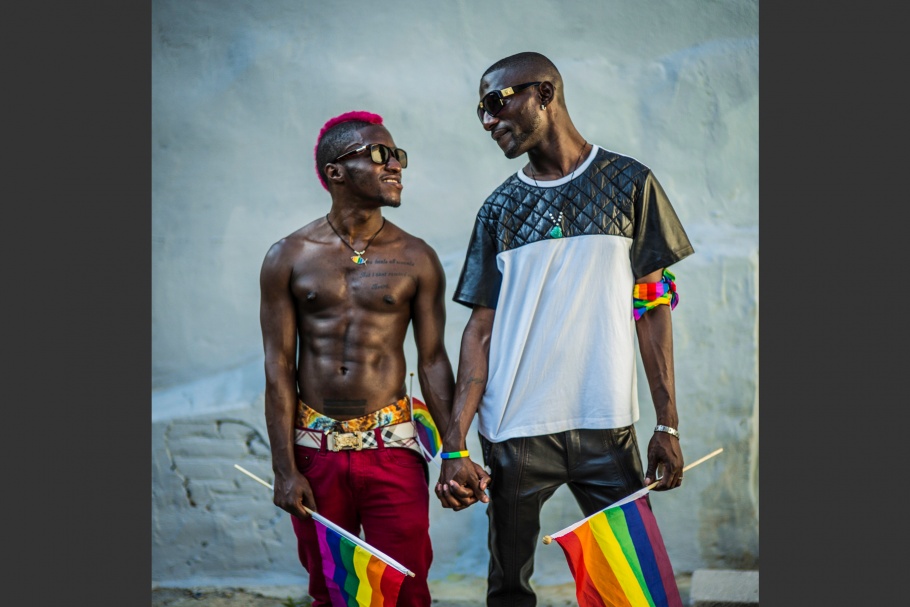
June 26, 2016
Activist
New York, New York
“I came with my fiancé and for the cause.”
Tonyé-d’mitria Vickers held the hand of Lamar Harris with what I can only describe as deep affection and adoration. It was all in the squeeze.
This was Lamar’s first pride, and he celebrated it by baring his chest. Tonyé held tighter when he spoke about the massacre in Orlando.
“I am actually seeing more unity and more unification than I have ever seen at a gay pride. There is a feeling of togetherness I have never experienced before. I expect stricter gun laws because we the LGBTQ community have made a lot happen in the past. I count on that strength to get things done.”
20170925-roye-mw24-collection-002
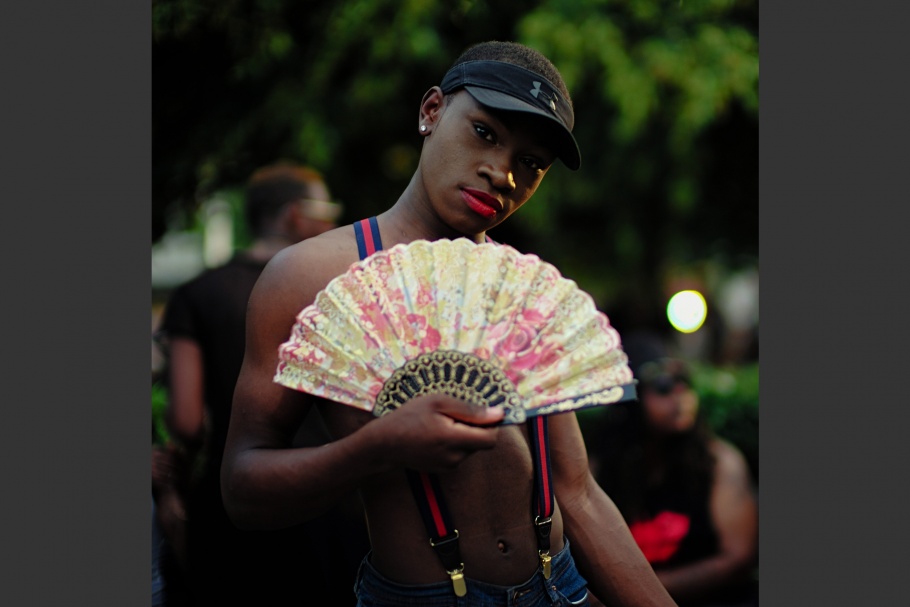
June 23, 2016
Ode to Orlando's 50
Washington, D.C.
Were the cops able to count the shots of 50 beautiful "fairies" who gave up their wings on an Orlando block? Were they able to find the hateful bullets, that turn one nightclub music into screams—a lone voice speaks from a pulpit. I do not know why it is strange to find a heart where you find one, when no caterpillar ever scorns its wings, or curses the fact that it was born with none. For me it's that simple, when a life is at stake, we ought to lift our voices in disgust and let our feelings be known. Seems to me that the gun is the obvious wrong, but we keep going to work like business as usual, and then grumble hypocritically when another mass killing takes place or a neighbor is senselessly gunned down. The power is still with the people if we all could just stay home, Congress would then be forced to listen and deal with this stinking NRA problem.
20170925-roye-mw24-collection-003
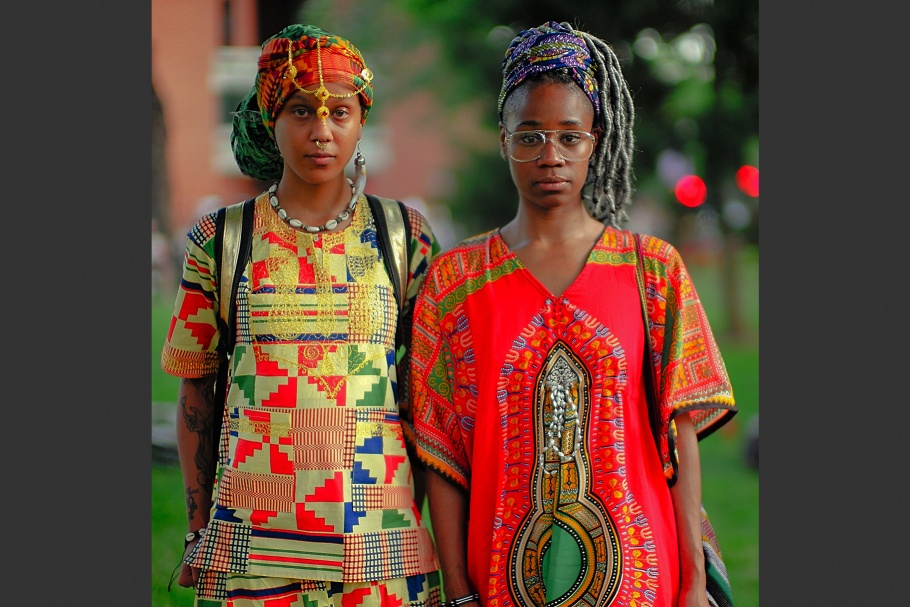
June 12, 2016
Vibrations (The .95 Project)
Washington, D.C.
They came to my defense.
She saw that I was about to lose it. I was being accused of taking an image that was not flattering, but the truth is, I had not taken the picture I was being accused of.
“We saw you, you were very good. We saw the energy and the vibrations of the young lady and she was just worried about her family member. You were very composed and didn’t allow her to upset you. That impressed my queen and I.”
20170925-roye-mw24-collection-004

January 20, 2015
Silence | I Can’t Breathe | Series II
New York, New York
“Our lives begin to end the day we become silent about things that matter.”
—Dr. Martin Luther King Jr.
Hertencia Peterson addressed the crowd of about 200 people right across from the steps of the United States Courthouse in Manhattan yesterday. She spoke on behalf of the family. As the aunt of Akai Gurley, she spoke from a very deeply wounded space. She spoke with conviction, experience, and passion.
“My nephew’s shooting was not an accident, I will not be silent,” she told the crowd.
After giving up the microphone, she was given a piece of artwork, which she accepted on behalf of the family.
“Today is emotional for me. It is Martin Luther King Jr. Day, so this march has a lot of significance for me and the family. I went to see the movie Selma yesterday and I was inspired. I was truly inspired to fight more because I was able to see what they did for us back then and it made me feel like we need to do the same—so I am here.”
20170925-roye-mw24-collection-005
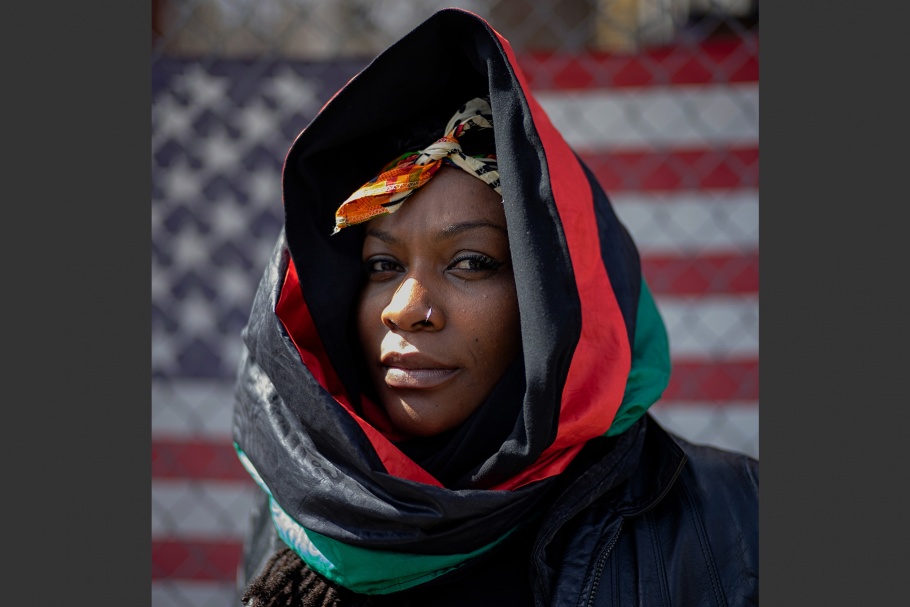
March 13, 2014
The Pan African
Brooklyn, New York
Nzinga Dotson-Newman is a thirty-one-year-old Californian who has recently moved to Brooklyn. She moved here two years ago to find what she described as “freedom.”
A year ago Nzinga embraced her newfound sexuality and said that “I found my freedom when I became OK with my vagina. A year ago I found the woman in me.”
She said her need to discover the woman inside of her took her through a rite of passage. She explained that her travels took her to the slave dungeons in Africa, she also followed the curious girl to dance samba in Bahia, and then she flew to find reggae in Jamaica.
While in Jamaica as a female wearing locks she was always told that what she wore on the beach, what she ate and drank, was not how a Rasta woman should conduct herself.
“It was on these trips that I first learnt how to appreciate being a woman in America. I appreciate my strength and my freedom here.”
Nzinga said that she survives here because her hobby became her business. “My first winter here I was really cold. I needed a thick scarf and so I made my first one, no sooner had I made it, someone asked to purchase it. In no time I found myself selling each scarf I made for myself. I now cover sneakers, make greeting cards, shirts and skirts, and scarves using African material.”
After this journey, Nzinga said, “I am happy, I love my relationships, especially with my family. The universe works in very mysterious ways, and today I am happy.”
20170925-roye-mw24-collection-006
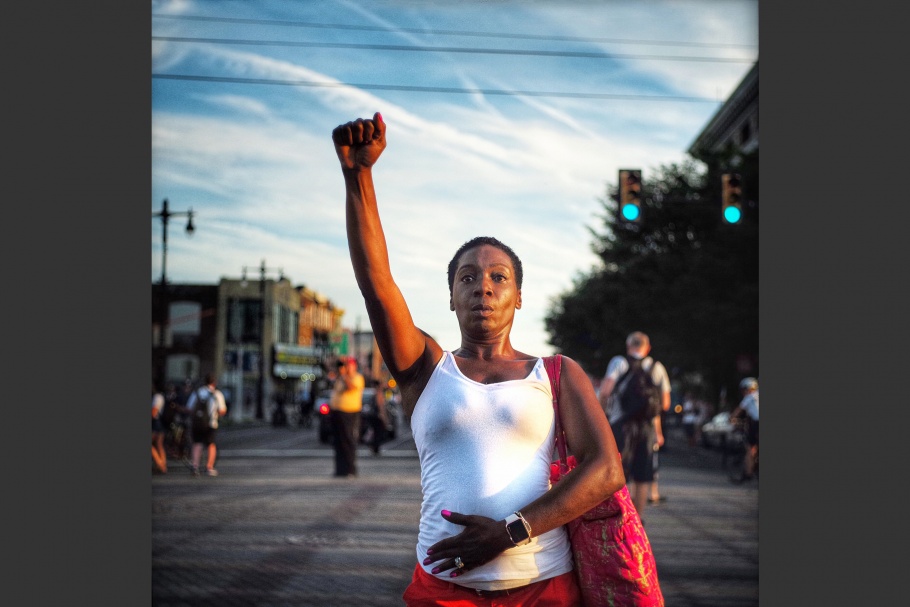
July 2016
DNC Protestor
Philadelphia, Pennsylvania
A woman greets the mass of protesters marching to the Democratic National Convention with a raised fist in the air.
20170925-roye-mw24-collection-007

February 12, 2017
By Any Means
Lafayette, Louisiana
The struggle in New Iberia, Louisiana, continues. Community activists like Khadijah Rashad are planning a march in New Iberia on March 3 to continue showing support for the family of Victor White III.
Victor White III was found shot in the back of a police cruiser with his hands still handcuffed behind him. According to his father, the official report stated that Victor White III shot himself while he waited in the back of the police car.
Radio personality Khadijah Rashad specializes in activism and decorated every inch of her house in Lafayette, Louisiana, with pictures and newspaper articles of importance to her.
“The ‘educational wall’ showcases the fights and struggles of our people. When friends and grandchildren come over, they can see our history embedded in the pages and pictures I have on my wall.”
A spokesperson for Lifers of Louisiana, a part of her mission is to educate her community, especially legislators, about the harshness of sentencing laws and how systems can provide resources for young men and women seeking to return to society. “I am advocating for those who I feel are serving sentences that appear to be too harsh.”
20170925-roye-mw24-collection-008

June 12, 2016
Cameron Sterling and His Mother Quinyetta
Baton Rouge, Louisiana
Cameron Sterling is only 15 years old. He is posing with a composite image he made this morning using a picture of himself and an old picture he had of his father, Alton Sterling. “The police took his phone so all the pictures he took are gone with his phone,” he told me.
The whole time I am with him, Cameron does not say more than two sentences without conjuring up some memory of his father that brings him close to tears. A song by Drake blares from his cell phone and he immediately starts a sentence with “That was my dad’s favorite song.” He tries to smile. “Today has been a peaceful day so far. There was less drama today. It’s quiet and calm today. But this morning started with my mom coming to get me so I can meet my lawyer and she had to call down to social services to get some money so our utilities would not be cut off.”
Both Cameron and his mother, Quinyetta, seem to hold each other up with words of encouragement.
“Why you crying now big boy? See I know my little teddy bear,” she said smiling as she watched her son hold back his tears.
20170925-roye-mw24-collection-009
![May 31, 2016. The Challenge. Brooklyn, New York. All I can recall is him saying his name was Elmer and that he was trying to both inform and remind people who were attending the DanceAfrica bazaar why having an event like this was necessary. “It’s not just about the wares and the beautiful people, I met both Malcolm [X] and Martin [Luther King Jr.] and so I feel obligated to carry their legacy with me.” Photo credit: © Ruddy Roye A man wearing a shirt of Martin Luther King Jr.](../sites/default/files/styles/mw_collection_910/public/photos/20170925-roye-mw24-009-1820.jpg%3Fitok=Wxv6oBAy)
May 31, 2016
The Challenge
Brooklyn, New York
All I can recall is him saying his name was Elmer and that he was trying to both inform and remind people who were attending the DanceAfrica bazaar why having an event like this was necessary.
“It’s not just about the wares and the beautiful people, I met both Malcolm [X] and Martin [Luther King Jr.] and so I feel obligated to carry their legacy with me.”
20170925-roye-mw24-collection-010

November 8, 2016
Poverty Is the Sculptor
Milwaukee, Wisconsin
Someone in Oakland, California, recently told me that if your policy or art have nothing to do with poor people, it’s neither radical nor revolutionary.
This has been one tough year. I have walked in Detroit, Dallas, Baton Rouge, Florida, Chicago, D.C., Milwaukee, Oakland, Los Angeles, New Jersey, and Philadelphia, all the while photographing people who look like me.
It’s been a year of self-realization. Who am I and how do I fit into all of this? The overarching question though is, “How has poverty shaped the lives and evolution of black folk?”
This election year was eye opening too. Working in the media has allowed me a space somewhere on the frontline of all that has been happening.
I can tell you that it has been a very heartbreaking few weeks. I have watched the best voices and minds, from analysts to moderators talk only about “emails, small hands, and pussy,” everyday, and it has been really frustrating. But to me it showed how relevant black lives are.
I met Davian, age 10, in Milwaukee, Wisconsin, waiting for the one o’clock food truck from the Salvation Army to arrive. The truck stops in his community with ham sandwiches, fruit, and milk as a means of feeding those who are hungry. This in 2016. So when Davian grows up—if he makes it—and develops a taste for something that the truck does not have, who fills that gap?
Poverty has ravaged this whole country not just in the black communities, but I will say after slavery was abolished, the black community was left by this country to fend for themselves. Panhandling is the one word that comes to mind. It has taken legislation to bridge the gap between rich and poor, and it is still wide.
I am watching Americans exercise their right to vote today, and I want to tell folks that it is not enough just to vote. It is more important to follow up after voting with work, with protest, petitions, and letters to State Senators and Congress people who will forget their promises. It is our obligation to do so, for the growth of all human beings living in this country.
20170925-roye-mw24-collection-011

May 1, 2015
Black Today
New York, New York
20170925-roye-mw24-collection-012
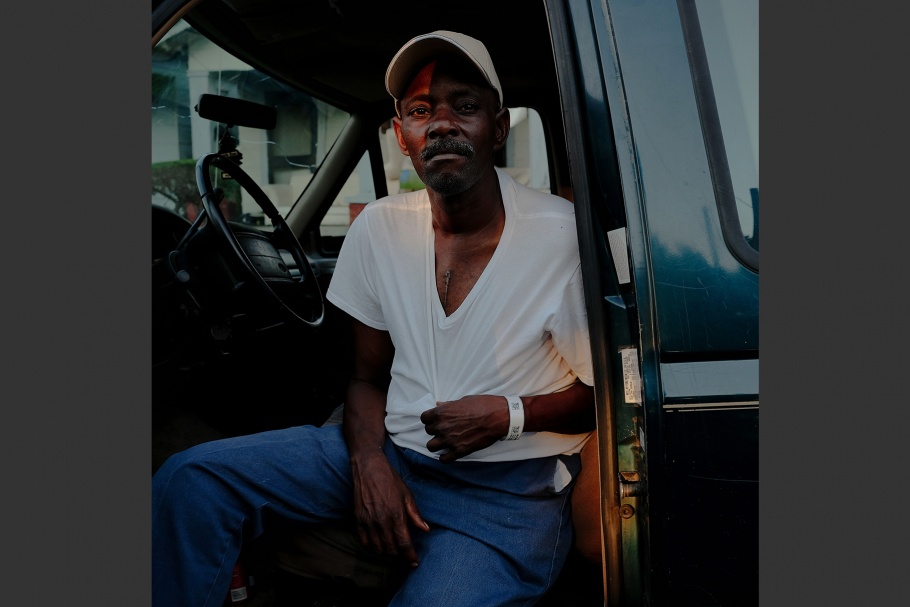
May 11, 2017
X Marks the Spot
Jackson, Mississippi
While on assignment, I try not to post images from where I work. However, if anyone thinks PTSD is solely unique to war-torn countries, just travel to the southern sections of this country and witness how black folk live in trauma. After you have entirely immersed yourself in their lives and stories, tell me how anyone can escape the ravages of post-traumatic stress disorder.
I parked up and heard the song “Ain’t No Love in the Heart of the City,” as if on cue. And while I stood on the side of the road talking to one of the residents of Mills Street, “My Life,” by Omar Cunningham, blared over the small Bluetooth speakers.
Fifty-four-year-old Mark McGee has lived on Mill Street in Jackson, Mississippi, all his life. “It used to be livelier, there was more things going on here. Movies and shopping centers. There was more activities. Now they are none. Everyone here is just basically stuck. You can’t get a decent job anywhere, you are either on Medicaid or disabilities, and there is no way out. People here get by on $5 and some drugs. No one will take a chance on me. They are afraid I will turn around and sue them.”
Mr. McGhee lost both his legs to diabetes and just six weeks ago had to undergo a triple bypass surgery.
Around another corner, I met this grandfather who was dumping pieces of furniture on the street because they were possessed by the devil. Since being here, I have witnessed a number of people apparently suffering from some form of mental illness (in my own opinion, of course).
Everywhere I go, the young people complain that there is nothing to do. And I am left speechless because at least I get to leave.
20170925-roye-mw24-collection-013
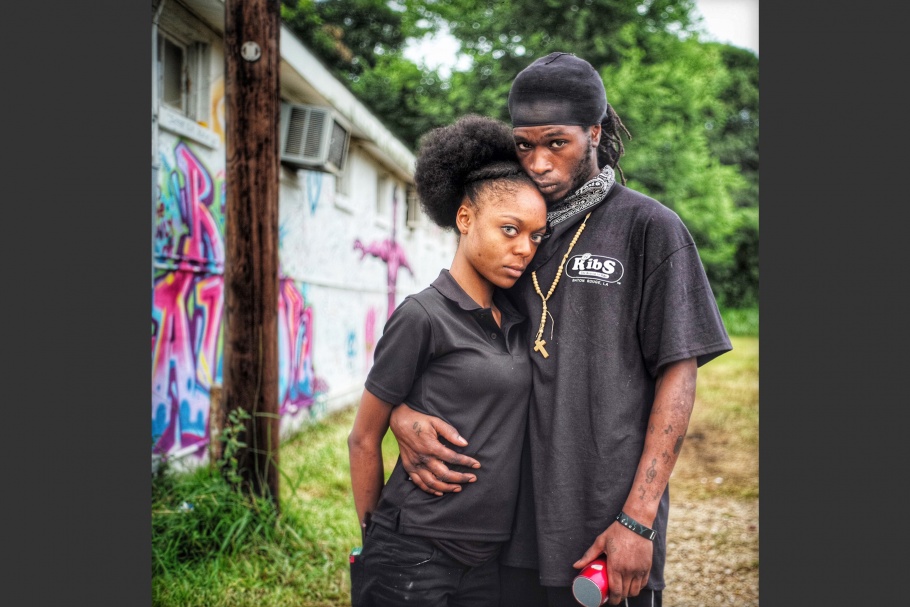
July 11, 2016
Triple S Food Mart
Baton Rouge, Louisiana
The sky was cloudy when I arrived in Baton Rouge this evening. The crowd was thinning at the vigil in front of the Triple S Food Mart where Alton Sterling died. Twenty-four-year-old Jacques Johnson and his girlfriend, twenty-two-year-old Pilar Agpawa, were hugging each other off to the side, close to a mural that was painted in Sterling’s honor.
“I needed to see if people were out here for genuine reasons. The media kept saying we were not doing it right and I needed to see it for myself,” Jacques said.
“I talk about equality a lot and I didn’t feel I should just speak about it and not show any action, so I came to be about it,” Pilar added.
20170925-roye-mw24-collection-014
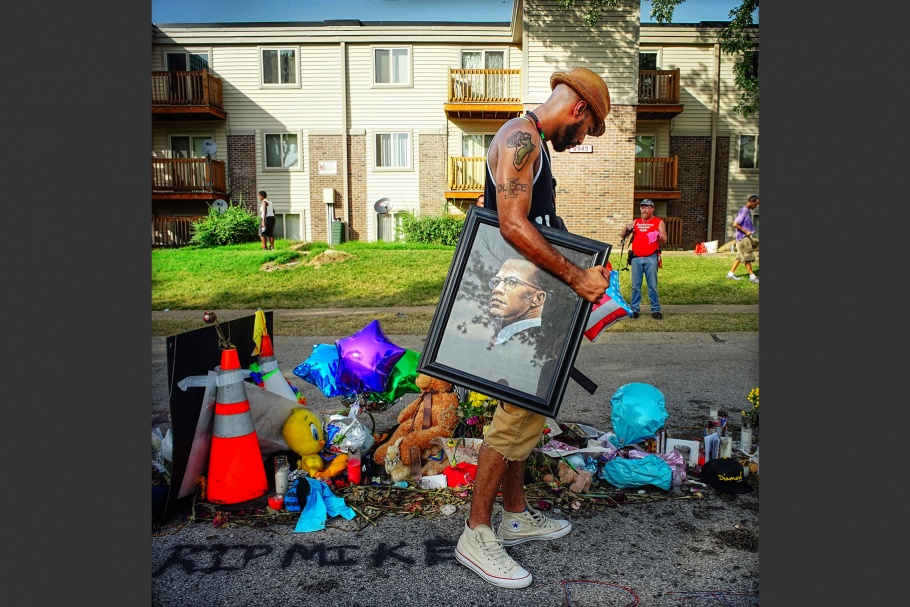
August 27, 2014
Who Is Our Black Leader?
Ferguson, Missouri
Sometimes I find myself biting my tongue in an attempt not to offend on social media. However, sometimes passion takes over, and I grapple with losing control before all my words come bubbling over.
I watched this young man walk up to the makeshift shrine where Michael Brown was killed, with a portrait of Malcolm X tucked under his arm. In the midst of a dying fire, it suddenly occurred to me that this portrait was the most I had seen of a black leader since I began walking that stretch of road.
My heart has yet to resolve what I saw in Ferguson, Missouri. I do not understand why the whole of America did not stop what they were doing and rise up to ensure that another young black youth does not lose his or her life so easily by the guns of unfeeling police officers. So today I will ask a question instead of my usual conjecture.
Where is the black leadership of this country?
I saw a son of one of our great ones at the funeral, and the way his body looked, I could tell that either he has not marched a day in his life, or he preferred to run his dad’s foundation from behind a desk. As much as I criticized his father’s non-violent methods, at least Senior was able to harness the interest of the whole world. I can tell you that I left some of Ferguson’s youth with their bright red ember burning in their bellies—others, unfortunately, had just a flicker. Nevertheless, both factions are walking around without the help of a guiding wind or hands to push their sticks together and repurposing their fire for good. Instead, I watched the clergy throw water on a movement and now all that flaming cinder and ash sits smoldering in their bellies, waiting for an indictment.
20170925-roye-mw24-collection-015
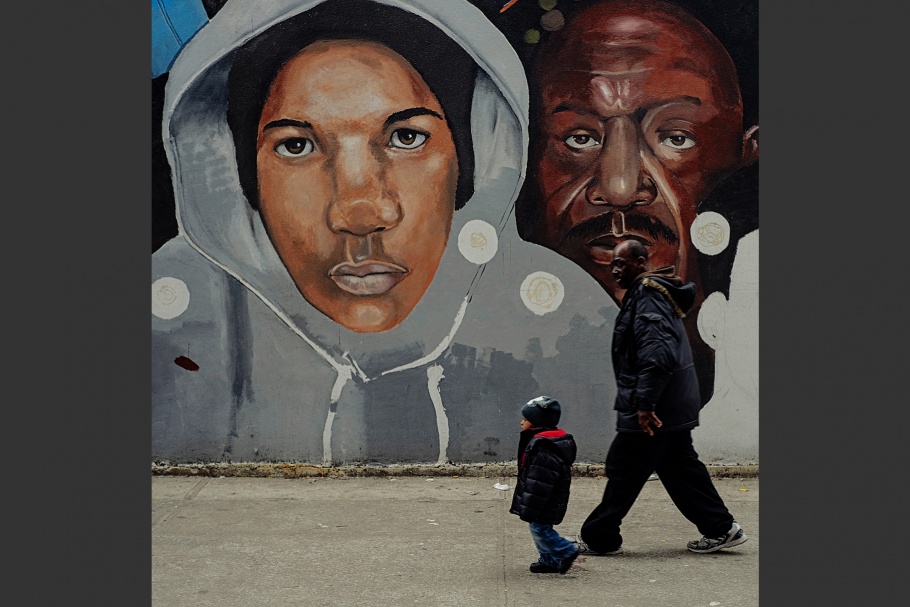
March 22, 2014
Mirror
Brooklyn, New York
Ruddy Roye (Jamaican, b. 1969) is a Brooklyn-based photographer whose images speak to the human condition and the injustices he witnesses daily. Yet his documentation of chronic homelessness and events such as the aftermath of Hurricane Katrina and the activism of the Black Lives Matter movement do not aim to capture misery, but to convey resilience and compassion.
Roye is a member of Kamoinge, an African-American photographers’ collective. He was featured in the documentary “Through a Lens Darkly,” and a recipient of an Open Society Katrina Media Fellowship (2006). He was named one of Complex’s “50 Greatest Street Photographers Right Now” (2014) and TIME’s Instagram Photographer of 2016. His Instagram account (@ruddyroye) engages over a quarter million followers. The Open Society Moving Walls grant will support the continuation of the When Living Is a Protest project.
Ruddy Roye
Sixty years ago, marching was considered an act of protest.
I have been able to grow up on the backs, sweat, and blood of those who made strides and steps in the direction that enabled me to pursue something other than picking cotton and chopping sugar cane.
However, this life is not without its scars—memories and vestiges of the toll “the struggle” has had on a race of people. Starting in 2015, I began walking the streets of New York City, through Brooklyn and Manhattan, and then later in other American cities and towns, reading the tales of those for whom the daily act of living is a testimony of this ongoing struggle.
When Living Is a Protest is my attempt to show a glimpse into what it means to live in “the struggle.” The following quotes by Albert Camus helped me to discover the linchpin for this series: “When the soul has suffered, it develops a taste for misfortune” and “The only way to deal with an un-free world is to become so absolutely free that your very existence is an act of rebellion.”
From photographing everyday life in places like Newark, New Jersey, Memphis, Tennessee, and Jackson, Mississippi, to documenting the tumultuous protests from the streets of Ferguson, Missouri, and New York City, I show the faces of Black Americans whose lives are spent living in protest, for whom the very act of living is a form of resistance.
—Ruddy Roye, October 2017